Iran Press/ Iran News: Nowruz, literary “New-day”, is the traditional Iranian new year celebration. It has been celebrated in Iran for over two thousand years by all the people regardless of ethnicity, religion, or language. It’s non-ethnic, non-religious characteristic is the precise reason for the fact that it is still prominent outside the political boundaries of modern Iran and is celebrated by people of Central Asia, Caucasus, and many other places in West Asia. It has also been adopted as the official New Year feast of the Baha’i faith, due to their roots in Iran.
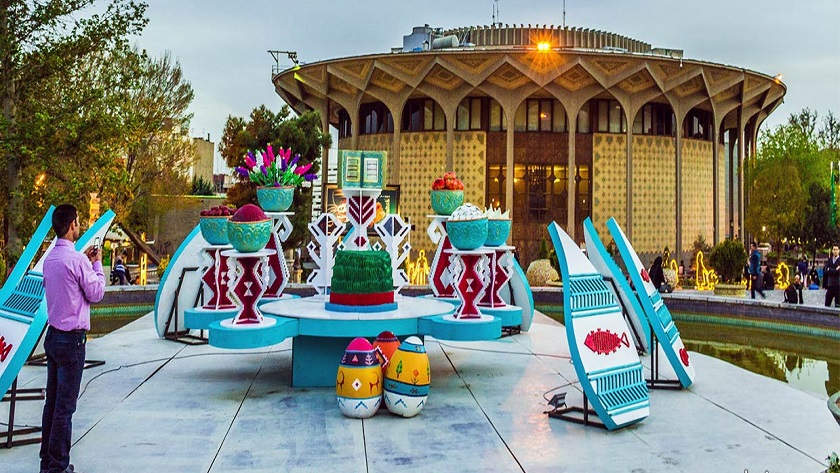 Symbolic Haft-Sin is set in many iconic landmarks across Iran
Symbolic Haft-Sin is set in many iconic landmarks across Iran
Although our oldest knowledge of Nowruz goes back to the Pre-Islamic, Zoroastrian history of Iran, there is no reason to believe that it is a religious celebration. To the same effect, Islamic adaptations into the Nowruz traditions have more to do with the intimate feeling of Nowruz as a traditional festivity than any religious beliefs. It’s timing, at the exact astronomical start of the spring, makes it a natural choice for celebrating a New Year, having similar parallels in other cultures.
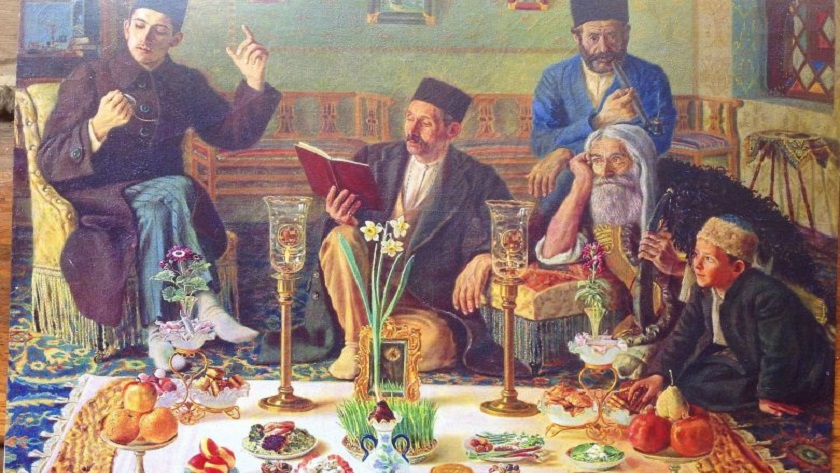 Iranian celebrate ancient Nowruz
Iranian celebrate ancient Nowruz
Nowruz ritual
Nowruz ritual mainly consists of setting Haft Sin, a table full of blessings and abundance that represents the beauty of the divine. The majority of Iranian Muslims put the holy book "Holy Qur'an" on their Haft Sin table, and Iranian Zoroastrians also decorate their tables with their own holy book, "Avesta".
In the past, when houses were more traditional in architecture, a room was always reserved for dining and receiving guests. A large table where all kinds of sweets, fruits and snacks were placed next to the Haft Sins, and the guests would gather around it and socialize with each other.
Even today, in many parts of Iran, the Nowruz table is spread on the ground, but the modern lifestyle has moved the Haft Sin to the table. Whether it is on the table or on the floor, the Haft Sin table still contains the "Seven symbolic items" of Nowruz, which are "Apple", "Samagh", "Semno", "Garlic", "Coin", "Senjad", and Sabze. Of course, some may substitute "vinegar" and "hyacinth" for one of the items.
 Setting Haft-Sin table is main ritual of Iranians in Nowruz
Setting Haft-Sin table is main ritual of Iranians in Nowruz
The various elements that shape Nowruz rituals together shape the cultural structure, people's lives and their identity. Haft-Sin, a table that is decorated with candles and mirrors, red fish, large boxwood and orange leaves, narcissus branches, hyacinths and greens.
In the land of Iran, setting a table for different occasions and putting different types of food and special elements on it has its roots in ancient times. It has played a role in the life of Iranian people as a cultural and religious reality from the ancient period to the Islamic period. Spreading the wedding table, Haft-Sin table, honored tables named after Imams (AS) and Yalda table, etc. are examples of tables that are spread in Iranian homes.
It is interesting to know that the seven types of food that are arranged on the Nowruz table have been different according to the social, cultural and climatic requirements in different regions of Iran in different periods and times.
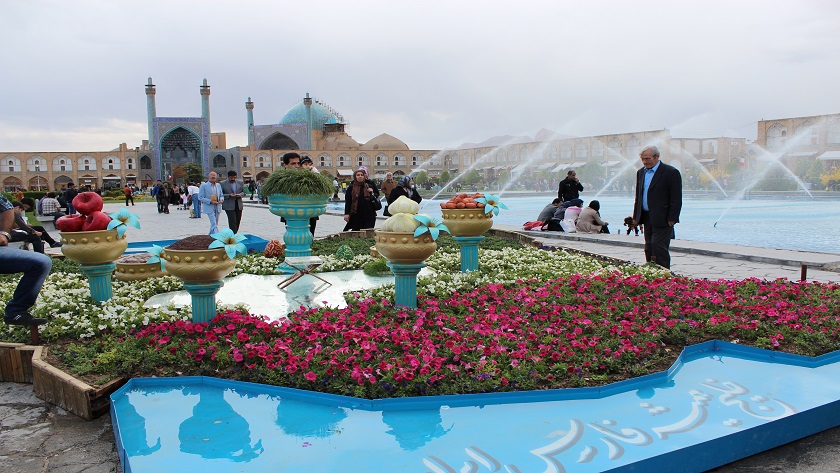 Nowruz celebration in Isfahan
Nowruz celebration in Isfahan
In most regions of Iran, seven types of food are placed on the Nowruz table, the first letter of which begins with "S" in Persian language, which some researchers believe that the letter "S" is an abbreviation of tray and shortened this word. In the past, fresh and dry foods from the ground and trees were arranged in Haft Sini or Haft Khuan Mesi ( a copper made tray) and were taken to the court and presence of the king during Nowruz. In fact, each of these foods was an example of one of the products obtained in the land of Iran.
Researchers in the field of ancient Iranian culture also believe that if we take a closer look at the ancient and religious elements of the past of the Iranian people, we will understand that the seven elements of the Haft Sin table correspond to the seven ancient holy angels. In fact, some believe that the Zoroastrians spread this table for the seven angels.
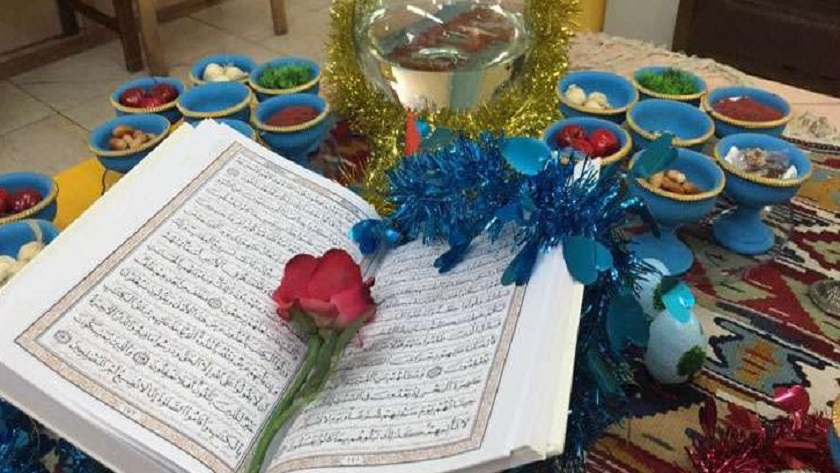 Holy Quarn is always present in Haft-sin
Holy Quarn is always present in Haft-sin
In some areas, for example, in some villages and cities of Khorasan, Fars, Khuzestan and other places, they set "table of seven M". The Haft-Meem ( consisting of seven items with M in their initials) table is decorated with foods such as chicken, fish, shrimp, muscat, raisins, madani (sweet lemon), yogurt, mung beans, and seven types of herbs, fruits, and drinks.
The Haft Sin table, which is the main focus of all homes, originates from the past beliefs and rituals of Iranians, and is also a center for gathering family members together and sitting them on the same table is a sign of friendship and love. Around the table, they forget all differences and practice solidarity.
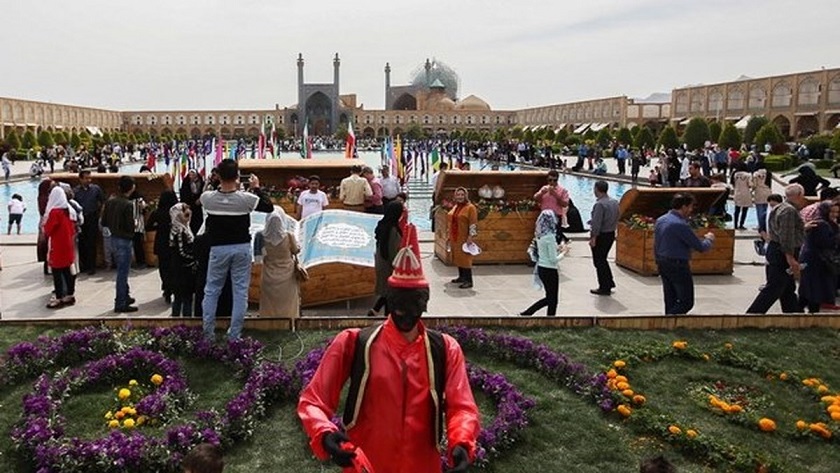 Nowruz in Isfahan
Nowruz in Isfahan
In fact, from the past, Khwan and Sofere Nowrozi played a very effective role in keeping the family foundation strong and continuing its cohesion in the society, and it still has such an impactful role. If you are a companion of Iranians, you will definitely understand the importance of family and its centrality in people's lives. There is respect and appreciation for family elders among most Iranians, which is definitely one of the reasons for holding beautiful rituals like Nowruz.
Iranians, wherever they are, from far or near, in any way they can, return to their homes before the start of the new year and sit beside Haft-Sin (Nowrozi table) with their parents, spouses, children, siblings and other members of the family. They celebrate the New Year together.
In any case, the arrival of spring and Nowruz and the celebration related to it is an auspicious event and reminds us that just like nature, which has equal day and night and the sun is in the spring equinox, we must live in moderation.
Read More:
Nowruz; Celebration as old as civilization of Iran
Ashkan Salehian

